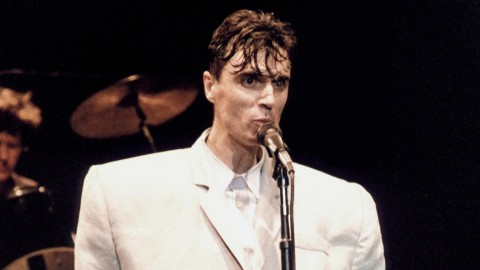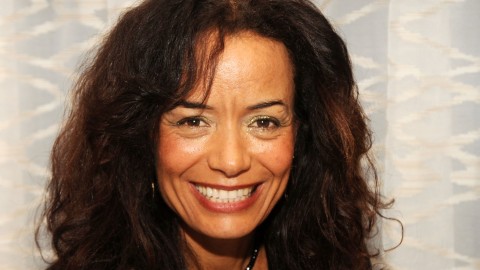NME Music News, Reviews, Videos, Galleries, Tickets and Blogs | NME.COM

One of the last films to be released in cinemas before lockdown was The Invisible Man, a snappy, VFX-laden reboot of the H.G. Wells sci-fi novel. Soon, audiences disappeared too, before film and TV productions shut down mid-shoot and were placed on an indefinite hiatus. Some of those titles were able to finish off work by sending their footage to post-production houses at the start of lockdown. Instead of real-life actors, flesh and blood was replaced by CGI pixels.
Now, as studios wrestle with new restrictions – social-distancing rules on set, inability to travel to some locations, limited crew numbers – many are turning to increased digital effects as a solution.
We spoke to experts in the VFX field to find out how the films we watch will change post-COVID – and if more CGI in movies is actually a good idea.

“VFX is going to be integral”
Andrew Lord – co-founder, Flipbook Studio (Star Wars: Origins, The Worst Witch)
Can VFX help films deal with coronavirus restrictions?
“You don’t need a massive crew on a virtual set. You don’t need to find a location, because you can shoot on one stage. That’s a massive benefit because you’re able to control the social distancing a bit better. It takes a while for new tech to filter through and it’s up to the VFX studios to push it and show its benefits, which is why we’re setting up a test system in Manchester. I expect it to be very much an integral part of the production process going forward.”
Will there be more CGI in films post-COVID?
“When productions started talking about recommencing filming, VFX was one of the key aspects they turned to. Obviously the health and safety aspects of live-action shoots now is a major ball-ache – and they increase the number of days you need to film for. If there’s an epic battle you might consider using CG simulations now instead of filming quite so many people. There’s always a mix of that anyway, but you might consider reframing the shot so that it’s more conducive for VFX than for live action.”

“New technology is quite out of reach of indies”
Luke Armstrong – writer-director of sci-fi thriller Solitary
Can VFX help films deal with coronavirus restrictions?
“There’s huge buzz at the moment about virtual production, which Disney used to great effect on The Mandalorian. You have a virtual background projected behind the camera on LED walls and the actor stands in front of it. The camera is filming a computer-generated background which looks photorealistic. There are motion sensors so the system knows where the cameras are pointing. Wherever you point you’re shooting a real 3D background. If you’ve got the money, then that’s a great option. There’s a big push at the moment right now for people to train up on those sorts of technologies, but that’s going to be quite out of reach of indies and most television.”
Will there be more CGI in films post-COVID?
“These days, it’s not just the big VFX pieces like spaceships exploding, it’s the stuff that you don’t see. In Solitary, [my new self-contained sci-fi film], all of the ceilings in the capsule are CGI. There was no ceiling because we needed to put lights there, so I replaced the ceiling in post-production. Hopefully that’s invisible, but set extensions and that basic VFX are pretty much a staple of every show. Death in Paradise uses VFX in that way.”

“They can’t shoot as much as they used to”
Dominic Thomson – creative director, The Flying Colour Company (Killing Eve, Peaky Blinders)
Can VFX help films deal with coronavirus restrictions?
“We’ve already built a remote VFX supervision system. We’re not the only people doing it. This means we can have a live feed to the camera if they don’t want an extra body on the set. I can sit in the studio, watch the live stream, and talk to the director and watch things as they’re happening if they don’t want me there. Everybody’s thinking about it, not only VFX. The average TV drama set can have between 50 and 100 people milling around like ants. How many of them really need to be there?”
Will there be more CGI in films post-COVID?
“I don’t doubt it. There’s a lot more signage on the streets of London which is very COVID-centric. There will be a lot more VFX to remove things like that. Also, if you look at a shoot schedule, there’s a lot less planned each day than there used to be because COVID restrictions mean they can’t shoot as much as they used to.
“If the amount of productions that are threatening to go ahead do shoot, then we will be busy. It will almost be payback for what post-production is going through this year, which has been a tough year for a lot of companies, including ours. Everybody’s saying it’s going to be a crazy year next year.”
‘Solitary’ is released on 31st August on multiple platforms and in major retailers
The post “You don’t need a crew on a virtual set”: how VFX is helping Hollywood cope with COVID restrictions appeared first on NME Music News, Reviews, Videos, Galleries, Tickets and Blogs | NME.COM.



